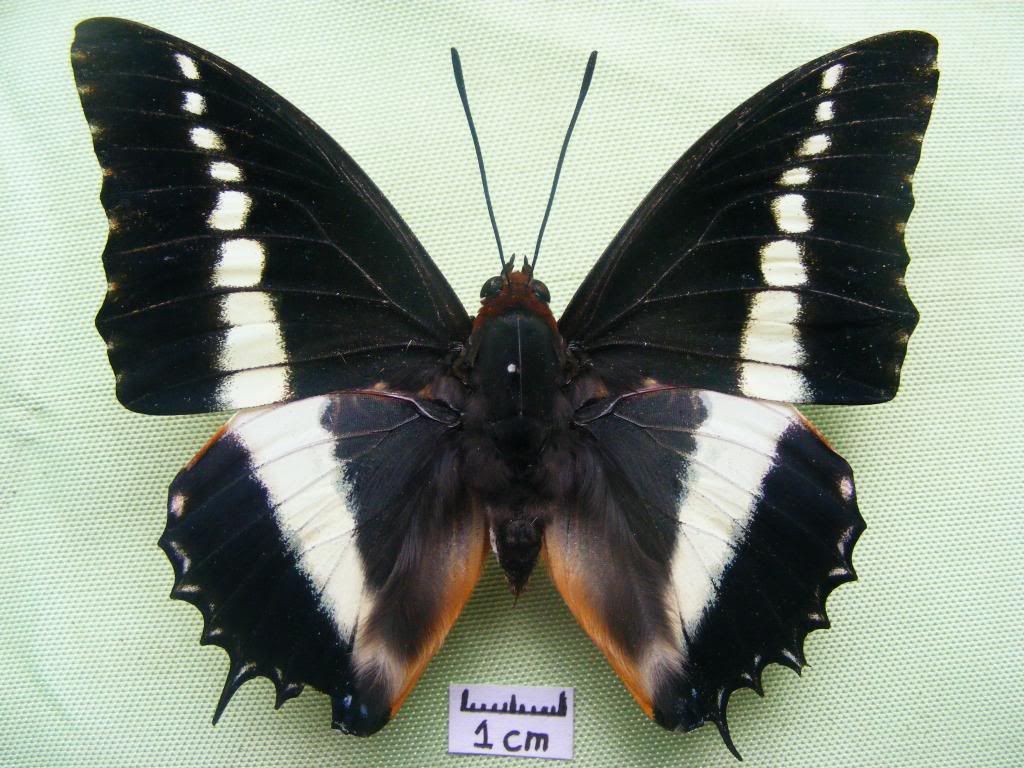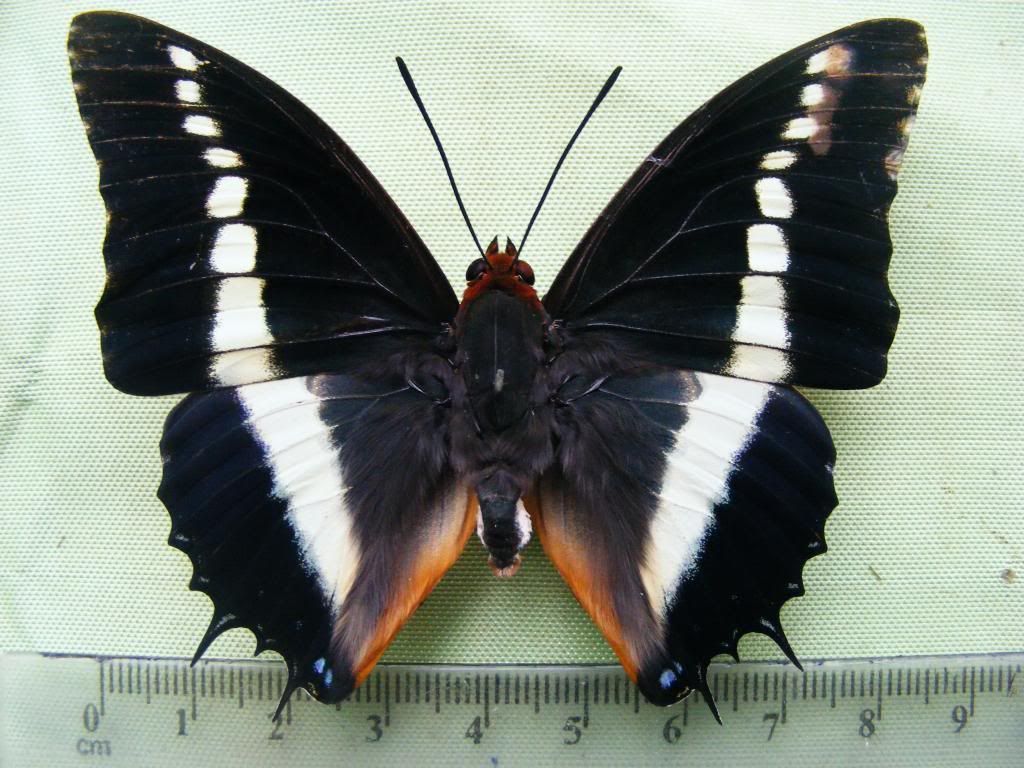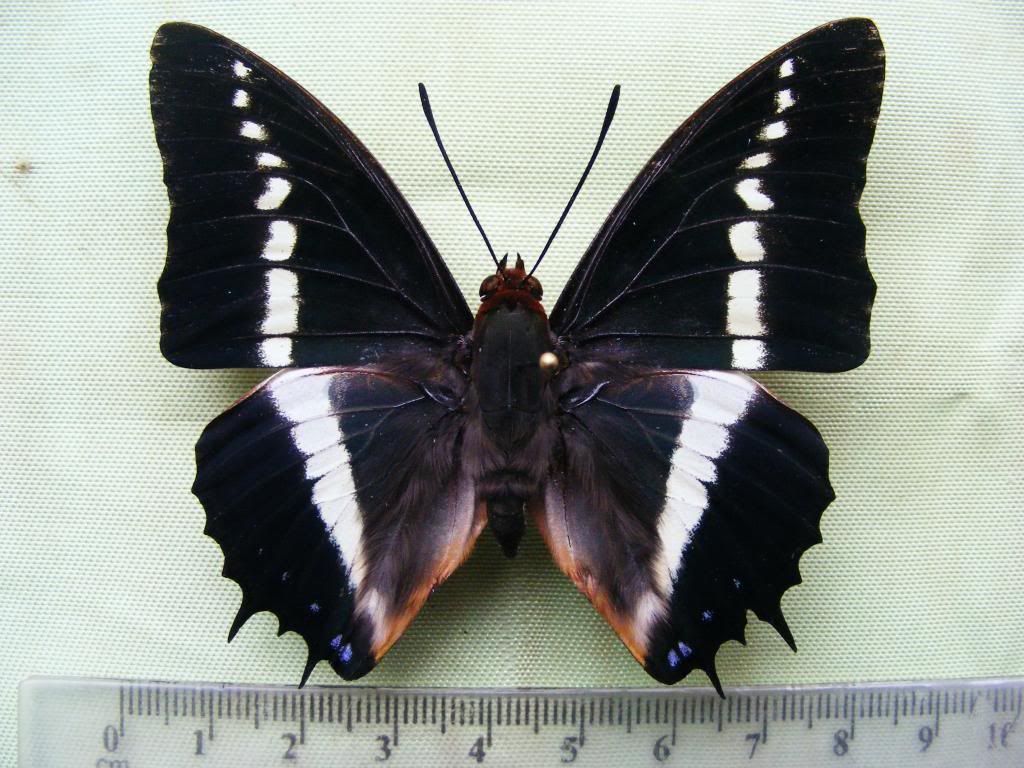|
|
Post by cabintom on Jul 22, 2014 12:35:18 GMT -8
Just wondering what subspecies these might be. I had thought C. b. angustus... but the specimens I caught in Haut-Uele earlier this month have much narrower bands, so I'm not sure if maybe there's another subspecies involved. Caught in Bunia, Ituri, DRC (Nov/Dec 2013)   Caught in Nebobongo, Haut-Uele, DRC (July 2014)  Thanks, Tom |
|
|
|
Deleted
Deleted Member
Posts: 0
|
Post by Deleted on Jul 22, 2014 15:02:12 GMT -8
Can't help with the id, but those are some good looking Charaxes Tom.
|
|
|
|
Post by africaone on Jul 23, 2014 3:18:53 GMT -8
these are linked to ssp angustus. In this zone some specimens have wider white band going to something like the "natalensis type". In Southern Congo you can find the two ssp separated by a few hundreds kms and intermediate occurs in the intermediate zone.
|
|
|
|
Post by cabintom on Jul 23, 2014 9:55:42 GMT -8
these are linked to ssp angustus. In this zone some specimens have wider white band going to something like the "natalensis type". In Southern Congo you can find the two ssp separated by a few hundreds kms and intermediate occurs in the intermediate zone. So, basically the bands get wider going south? |
|
|
|
Post by africaone on Jul 23, 2014 13:06:21 GMT -8
these are linked to ssp angustus. In this zone some specimens have wider white band going to something like the "natalensis type". In Southern Congo you can find the two ssp separated by a few hundreds kms and intermediate occurs in the intermediate zone. So, basically the bands get wider going south? South and East (Kenya is the limit in the North, in Ethiopia it is replaced by two similar species). |
|
|
|
Post by cabintom on Jul 23, 2014 13:22:14 GMT -8
Neat. Thanks for clearing up the ID for me!
Do you have any expertise in differentiating the black demon charaxes? I've caught several, and have no clue on IDs...
|
|
|
|
|
|
Post by africaone on Jul 23, 2014 23:38:01 GMT -8
Neat. Thanks for clearing up the ID for me! Do you have any expertise in differentiating the black demon charaxes? I've caught several, and have no clue on IDs... only a few species of the " black demon Charaxes " can be identified 100 % in your region until a serious study of all types and names available is done, it is quite risky to name them (only a big part of those from East/South/NE Africa can be identified with a good fiability) imagine that even etheocles is probably misidentified !!!! The problem in the study of Charaxes is that there are more Charaxophile than real Charaxologist and none of the "Charaxologist" seeem to be interested in a real scientific study of the group. Even some well collected groups (normal Charaxes) are poorly known or badly studied. Some recent works tried to solve it but it is very slow and done without real means. What is strange is that the knowledge, genetics, breeding, study material are available to do a such work today. For the black ones, many local collectors know very well how to distinguish "their own fauna" but it seems a nightmare to resume all of them in a comprehensive work at African level. |
|
|
|
Post by cabintom on Jul 24, 2014 0:36:06 GMT -8
Neat. Thanks for clearing up the ID for me! Do you have any expertise in differentiating the black demon charaxes? I've caught several, and have no clue on IDs... only a few species of the " black demon Charaxes " can be identified 100 % in your region until a serious study of all types and names available is done, it is quite risky to name them (only a big part of those from East/South/NE Africa can be identified with a good fiability) imagine that even etheocles is probably misidentified !!!! The problem in the study of Charaxes is that there are more Charaxophile than real Charaxologist and none of the "Charaxologist" seeem to be interested in a real scientific study of the group. Even some well collected groups (normal Charaxes) are poorly known or badly studied. Some recent works tried to solve it but it is very slow and done without real means. What is strange is that the knowledge, genetics, breeding, study material are available to do a such work today. For the black ones, many local collectors know very well how to distinguish "their own fauna" but it seems a nightmare to resume all of them in a comprehensive work at African level. I was afraid of that... seems like everything in this area is in need of revision. |
|
|
|
Post by africaone on Jul 24, 2014 1:24:35 GMT -8
.... seems like everything in this area is in need of revision. not everything need revision but it is true that there are very few studies on African fauna and the progresses in collecting these last decades were not followed by the the equivalent in scientific studies (except from RSA, only a handfull specialists of the fauna publish regularly)! This gap will dissapear with the years in Butterflies (in moths the gap will probably never be filled). many lycaenid groups were recently revised and skippers will soon be entirely revised, Acraea, Graphium, many Nymphalids are quite well known. Some popular groups remain in the dark such as Cymothoe (Under study today), Euphaedra, Euryphura, Black Charaxes, Green Papilio, some others needs to be updated such as Pieridae, Precis, Satyrinae, etc. |
|